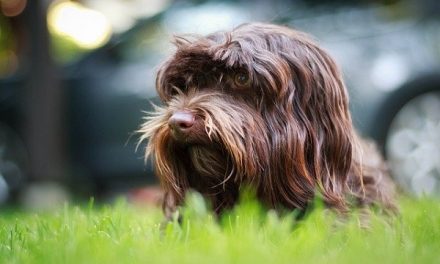The adorable Havanese dog may be small on the outside, but as Havanese fans can attest, this dog breed has more than enough personality and charm on the inside to make up for it!
Currently, the Havanese dog is the 24th most popular pet dog in America, beating out nearly 200 other purebred dog breeds for this top slot.
Because Havenese dogs are so loved and often treated as equals with their human family members, Havanese health problems can be particularly heartbreaking.
Fortunately, some (if not all) health problems in the Havanese breed are preventable. In this article, learn what to expect and how to safeguard your Havanese dog’s health and their quality of life!
Havanese Dog Breed: Overall Health Outlook
Happily, the Havanese Club of America, the official breed club for the United States, reports that purebred Havanese dogs are known to be generally healthy overall.
These dogs can also outlive the majority of other purebred dog breeds, with an average life expectancy of up to 16 years.
This means the more you can do to keep your Havanese dog healthy and strong, the longer and better your life will be together.
Havanese Dog Basic Health Needs
Each dog breed has its own activity level, dietary requirements, grooming needs, training and exercise levels, and socialization preferences. The Havanese dog breed is no exception.
Socialization needs.
As the American Kennel Club (AKC) outlines, the Havanese dog overall is a very social and people-focused breed. These little pups really need and crave the company of “their” humans to stay healthy and happy. A bored, lonely Havanese can quickly develop problem behaviors.
Here, it almost goes without saying that this dog is not the breed to get if you have to be out of the home for hours most days.
Exercise needs.
A fully grown Havanese dog may only weigh between seven and 13 pounds, tops. This makes Havanese dogs a perfect pick for small space living.
However, Havanese dogs have a centuries-long history of living (quite literally) in the lap of luxury, dating back in their Cuban birthplace as canine companions to royalty.
Plus, the Havanese is very cute. This makes it incredibly difficult to resist the begging behaviors these dogs pick up remarkably quickly.
A good rule of thumb here is to work with your canine veterinarian to establish a baseline nutrient/caloric intake for each stage of your dog’s life (puppyhood through golden years). If you offer treats that exceed this daily recommended intake, your dog is at risk of gaining too much weight.
Overweight Havanese are more at risk for a variety of health problems. Plus, putting your adorable pup on a diet is not for the faint-hearted owner. It is far easier to simply manage food intake from day one and offer appropriate exercise to counteract treats.
Overall, a healthy adult Havanese will fare quite well with a daily walk and daily indoor playtime. Over-exercise can be as dangerous as under-exercise for these tiny dogs so be sure to watch your dog closely for signs of exhaustion.
Grooming needs.
The Havanese breed’s long, silky coat is not just their signature look. It also represents the most labor-intensive part of caring for a Havanese. Without at least a thorough daily combing and brushing, the coat can form tangles and mats that can abrade the skin and open your dog up to infection and worse.
However, you do have some options. If you do not plan to show your Havanese, consider a short “puppy clip.” Alternately, once your dog is out of puppyhood, you can cord the coat – this is similar to dreadlocks, just for dogs.
Training needs.
The Havanese is a highly intelligent and sensitive breed. Because these dogs are very people-centric, they are easy to train as long as you use positive (reward-based) training methods.
Without proper training starting in puppyhood, your dog is at risk for major health issues later in life. Havanese need to learn early and quickly what behaviors are acceptable and what behaviors are off-limits to avoid preventable dangers.
Common Health Issues in the Havanese Breed
Even if you are vigilant about tending to each of your dog’s daily needs, from training to grooming to you-time, sometimes health issues will crop up anyway.
In fact, Havanese dogs are known to be predisposed to a number of more serious health issues, some of which are heritable (genetic).
Deafness
Deafness is a known heritable condition in the Havanese breed. It can occur in one or both ears.
Eye issues
Cataracts in dogs are essentially the same as cataracts in humans – a thin film forms over the lens and obstructs vision. Havanese develop cataracts more commonly than many other purebred dog breeds, which is why annual eye exams are recommended.
Cherry eye is another common eye condition in the Havanese breed.
Cherry eye happens when the major tear gland located at the base of the eye prolapses, or sticks up and out of the surrounding cartilage and becomes visible. Cherry eye causes pain and inflammation. Surgery can correct the issue.
Hip dysplasia
Hip dysplasia occurs when the ball and socket of the hip joint fails to form properly. This condition can cause tremendous pain and can only be resolved with surgery.
Patellar luxation
With patellar luxation, the elbow joint is loosely formed and the joint can easily slip out of socket. This condition can happen in one or more elbow joints and can cause chronic temporary lameness. Surgery can often correct the condition but is not always required.
Chondrodysplasia Punctata (CD)
CD is a metabolic disorder that causes uneven leg growth, dwarfism, bowed legs and gait disparity leading to lameness. While some breeds (most notably the Dachshund) include genetic dwarfism in the breed standard, the Havanese does not.
CD is diagnosed with a physical exam, visual gait exam and X-rays. Corrective surgery is sometimes required, but not always.
Legg-Calve-Perthes (LCP)
Legg-Calve-Perthes disease also affects the hip joint and symptoms may appear as early as five months of age. Limping, pain, lameness, arthritis, muscle atrophy and similar symptoms may indicate LCP. It can affect just one or all hip joints and is correctable with surgery.
Liver shunt
A liver shunt is a known congenital (present at birth, heritable) condition that is common in Havanese dogs. Liver shunt re-routes blood from the liver to the heart. The result is that potential toxins remain in the blood and enter the heart.
Severe cases of liver shunt may show up as early as six months of age. Milder cases may take a lot longer to diagnose, since symptoms can mimic other health issues. Sometimes surgery can correct the condition, but it depends on the location of the shunt(s). Often treatment involves a restricted diet.
Recommended Health Pre-Tests for Havanese Dogs
Working closely with a reputable, health-focused Havanese breeder who pre-tests breeding pairs and maintain excellent health records for breeding lines can help to avoid some preventable health heartaches.
Before making a commitment to any Havanese breeder to purchase a puppy, always ask to see documentation of all currently required health tests. Reputable breeders will be happy to share this information.
As of publication time, the Havanese Club of America recommends all intact (non-spayed, non-neutered) potential breeding pairs and puppies for sale receive the following health tests:
BAER test.
BAER is an acronym that stands for “brainstem auditory evoked response.” This test looks for unilateral (single ear) or bilateral (both ears) deafness or hearing impairment.
The test takes just 15 minutes and is non-invasive.
CERF/CAER test.
A CERF/CAER test looks for cataracts and other breed-specific eye issues. It is only good for one year and must be repeated annually.
The test can require eye dilation but is otherwise non-invasive.
Hip evaluation.
A hip evaluation looks for hip dysplasia, a condition where the ball and socket joint in one or more hips is malformed.
The test uses X-ray (radiograph) technology to examine the hip joints. Overall, the test is non-invasive.
Patellar evaluation.
A patellar (knee) evaluation looks for patellar lunation, a condition where the knee joint is loose. It can happen in one or more knee joints.
The test uses X-ray (radiograph) technology to examine the knee joints. Otherwise the test is non-invasive.
How to Pick a Healthy Havanese Puppy
After reading through this list of Havanese health issues, you may be understandably concerned about the wellbeing of your pup! If you are trying to decide whether to add a Havanese puppy to your family, this concern may be even greater.
Due to focused breeding to a purebred standard, most purebred dog breeds today have a possibility to inherit certain health issues. This should not be a deterrent, but merely an invitation to carefully screen any breeder you choose to be sure their breeding dogs are healthy.
Ask the breeder for an initial guarantee of health (typically 12 to 24 months). Be sure to have your own canine veterinarian examine your new puppy within 48 hours of pickup. This is the best way to pick a healthy Havanese puppy.





Yes, Havanese dogs do shed, but in a minimal amount, making them a great choice for those looking for a low-shedding breed.